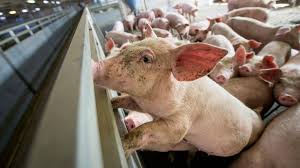
Category: Slaughterhouse


SLAUGHTERHOUSE VIGIL, Whanganui, NZ, 14 November, 2019
End Animal Slaughter’s Sandra Kyle has been doing weekly or twice-weekly slaughterhouse vigils for the international Save Movement for around four years, much of that time standing on her own. Here is her account of her latest vigil.
As you wander up and down supermarket aisles, stopping at the freezer to select a pristine packet of meat, do you ever take the time to think about the animals who died for your dinner?
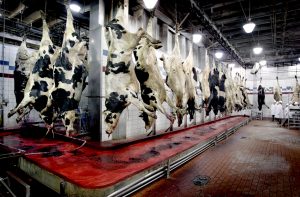
I heard the voice of one of them today when I pulled up outside Land Meats. Above the relentless hum of industrial slaughter, the clanging of metal doors, the ‘Hup Hup’ of the worker with the stick beating animals to enter the kill chute; above the din and roar of passing cars and trucks; one solitary animal was raising his voice and mooing loudly, desperate for somebody to help him. The animal’s instincts of self-preservation told him he was in grave danger, and he was crying out in fear.
You may not know that this cow, and all the cows I saw today, cherished their lives every bit as much as we do ours, but while ignorance may be bliss for you, it is not for the animals who had their lives mercilessly stolen this afternoon.

The pitiful dirge of that cow cut me up inside, and my will to act faltered. I stayed put for some time, trying to muster the strength to get out of the car and take some photos. I knew I didn’t have the heart to stick around long, so today I decided I would just get my photos and go.
There is a big difference at the slaughterhouse between a Sunday, when there is no killing, and a weekday when killing is happening all day long. You can literally ‘smell death’ in the air. The smell of blood and organs spewed out of air ducts around the building. This is the normal environment for the slaughterhouse workers and those in surrounding buildings during the working week.
There was only one cow protesting, but every one of the Angus, Hereford, Holstei-Freisian and Jersey I saw today would have been in pain and distress. Any vet can tell you that animals do not show pain the way we do. To show any kind of weakness, including emotional weakness, is signalling to a predator that they are not fit for survival. Cattle and many other animals are tremendously stoic, and hold it all inside, so you see many slaughterhouse animals standing very still, their heads down. For a cow, comfort is the herd, and their suffering would have been intensified as they saw friends and family leave one by one, every few moments, and not return.
It breaks my heart to think of the way that we humans treat animals. You don’t have to eat meat in this day and age. You CHOOSE to do it. Why? Why? Because of your taste preferences?
I wish you would come with me to the slaughterhouse and lock eyes with your victims, knowing that their lives will be stolen in the most barbaric way because you are addicted to their flesh and secretions. Seriously, I wish you would come with me! If more people experienced the reality of slaughterhouses they would stop consuming animals, I’m convinced of that.
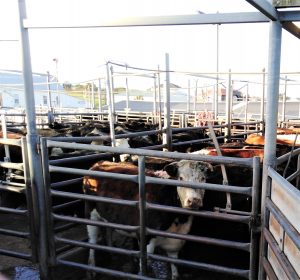
There were too many workers around for me to take photos at the fence, so I crossed the street and stood on the stairs of the MARS petfood factory. Standing on a small stool I could make out the cows in the pen. I saw the cattle enter to go to the stunning gate, and watched a worker prodding the terrified animals to keep moving to their gruesome, nightmarish end.
All the gentle, helpless, sentient beings I saw today are dead now, it’s been five hours. The vocal cords of the cow that was mooing so loudly are now probably lying in a bin, awaiting disposal. What’s more when dawn reclaims the night, more cattle will start arriving at Land Meats and the monumental crime will start all over again. And so it will be, until you, if you eat meat and dairy, decide once and for all that you don’t want to be a part of this sick insanity any longer.

VOICES FOR ANIMALS ACROSS THE YEARS: GAIL EISNITZ
GAIL EISNITZ has a unique place in the history of Animal Rights. Fearlessly and relentlessly, armed only with her compassion and desire for truth, she entered the world of the US Animal Slaughter industry. The horrors she encountered led to her groundbreaking book ‘Slaughterhouse’, (1997/2006) that has been influential not only in mobilising generations of animal advocates, but also in bringing about changes in law codes governing the meatpacking industry.
Our featured article is part of the ‘Unbound Project‘ series, celebrating women at the forefront of animal advocacy.
Read the article here
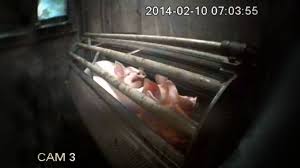
‘Humane’ Torture – how pigs are stunned in slaughterhouses
Pigs have the intelligence of a three year old child. They are curious, insightful, non-aggressive, social, and form close bonds with other individuals. When raised for slaughter, they typically live in extremely cruel factory farm conditions. The abuse of these intelligent and aware animals defies belief. For example, just this week a story has come to light showing live pigs being used as crash test dummies in China.
The flesh of pigs is in high demand all over the world, and billions of pigs are killed every year for food.
One of the most common forms of stunning pigs is to use a C02 chamber, described as a ‘more humane’ method of stunning pigs prior to slaughter.
In CO2 stunning, pigs are herded into a steel cage called a gondola, which is then lowered into a gas chamber. The pigs are typically frightened and reluctant to enter the gondola, so electric prods are often used to shock the pigs. Undercover evidence has shown frustrated workers frequently abusing resistant animals by repeatedly jabbing them with burning prods, sometimes holding them down while the animals scream in agony.
Once inside the C02 chamber pigs respond with panic and pain as their nasal passages burn and they cannot breathe. They thrash around violently, jumping over each other in an attempt to escape before collapsing in convulsions. (Feature photograph shows a still from a video taken by Aussie Farms, in 2014).
It is time to stop the carnage. It is time to close slaughterhouses for good.
WATCH THIS SHORT VIDEO (GRAPHIC WARNING) taken from recent undercover footage at Skovde Slaughterhouse in Sweden.
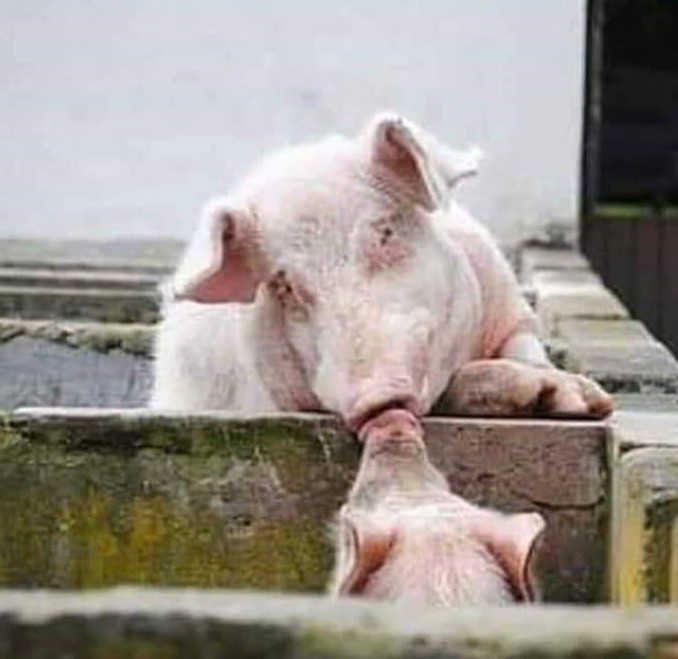
Pigs in Peril: Slaughterhouse deregulation in the US
Gail A. Eisnitz, author of ‘Slaughterhouse: The Shocking Story of Greed, Neglect, and Inhumane Treatment Inside the U.S. Meat Industry’, and 2004 winner of the Albert Schweitzer Medal, is the author of our featured article.
In December this year, the U.S. Department of Agriculture will implement its ‘modernization’ plan for the slaughter of pigs (hogs). Under the new rules, meat processing companies will be given the green light to operate without a ceiling cap, effectively a licence to kill as many pigs as they can, as fast as they can. The new laws also make key inspection duties within plants self-regulating, an inherent conflict of interest that will end up badly not only for workers, but potentially for public health and, of course, for the principal victims, the pig themselves.
As Eisnitz documented in her ground-breaking book, pigs in high-pressure, chaotic slaughterhouse environments were still conscious after being stunned, shackled, hoisted and stuck (throats slit). Others regained consciousness and ending up being thrown in the scalding tank, still alive, spending their last moments in unimaginable, excruciating agony. Employees at these high speed plants routinely resorted to brutality against the animals, to vent their frustrations as they attempted to cope with the physically and emotionally heavy demands on them.
If the legislation comes into effect this dire situation will only get worse. Unless there is grassroots action to urge lawmakers to stop the implementation of these ill-conceived and inhumane changes, the Trump government will be responsible for jeopardizing the physical and mental health of slaughterhouse staff; consumers will be more likely to contract disease; and even more intelligent, sentient beings will die in conditions of extreme terror and agony.
Read the article here
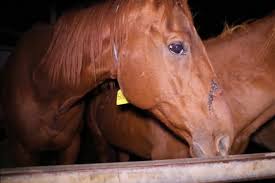
‘Every horse can’t be a winner. What can they do with these horses?’ Interview with a kill buyer.
The Australian Broadcasting Corporation’s expose this week on the abbatoir fate of ex racehorses has shocked the world. This article that first appeared in the Sydney Morning Herald shows that despite pleading ignorance about how many ex racehorses end up as horse meat, it is mainly trainers who sell their gallopers directly to kill buyers.
Read the article here
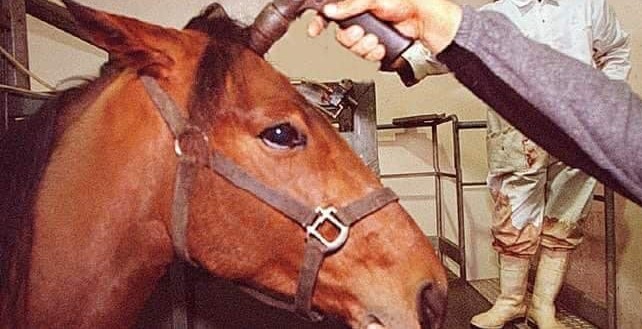
‘Violent, gory and agonising’ – the tragic fate of ex-racehorses
This week the Australian Broadcasting Corporation aired a programme about the fate of ex champion racehorses who, instead of being retired to live out their lives in peace and safety, ended up in abattoirs and knackeries. Shocking undercover footage taken in Australian saleyards and slaughterhouses shows them being cursed at, beaten and injured by workers before they were killed.
This is the fate of far too many racehorses all over the world. A recent film, Platinum Ticket’s Final Ride, looks at the process that led to US champion gelding Platinum Ticket’s tragic end in an abattoirAKL.
Read also the article shared from All-Creatures.org
Quote from the article:
“As with other species, slaughter occurs by the cutting of both carotid (neck) arteries which results in their bleeding to death. In some cases horses are hanged by the neck from chains until they suffocate; just one method of subduing the power of a large creature whose utter terror – even in a wounded and depleted state – makes their desperate fight for life dangerous to their killers and a financial risk to their plant and equipment. It is violent, gory and agonising. Like all our victims, their fear is simply off the scale.”
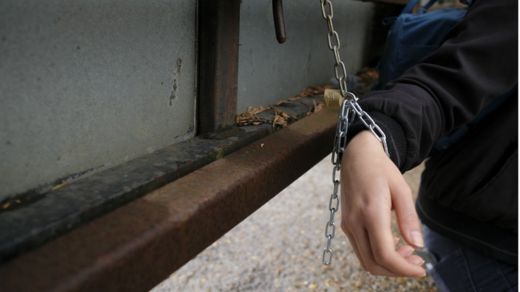
‘We All Need To Stop And Ask For Change’
Just days after animal justice group Animal Rebellion was banned from protesting in London this week, they stormed Newman’s Abattoir in Farnborough and u-locked and chained themselves to a slaughter truck. Eighteen arrests were made, and three activists have been charged as a result of the action.
Excerpts:
“It was our duty to come here and make these demands – that we must transition to a sustainable food system, and stop exploiting the millions of cows, pigs, sheep, and goats who pass through this slaughterhouse every year. Our activists arrested this morning are heroes and will be remembered for this courage in the face of harsh police tactics.”
“Animal Rebellion accepts the need to support meat industry workers to transition to the production of alternative products, and calls on the government to immediately implement policies to support this change towards a plant-based food system, and work, for example, with the Vegan Society’s Grow Green Campaign, that helps farmers transition from meat and dairy to veg production”.
Read the Sentient Media article here

Meteor, the fugitive from slaughter, will probably have his life spared
It is not only Meteor the fugitive yak who should be spared from slaughter. All animals should be, writes End Animal Slaughter contributor LYNLEY TULLOCH
When animals escape from the slaughter house truck, there is often media interest. I often wonder what it is about this scenario that captures the public imagination so much?
A recent story reported by BBC news, concerns an “aloof yak” who has gone on the run following his escape from a farm truck on the way to the butcher. This yak has a name – Meteor – and he has been raised for meat on a small family farm in Buckingham, in Rural Virginia.
After his escape, it is reported that Meteor crashed through a stop sign. He also visited several locations, including the grounds of Orchard House Bed and Breakfast. He looked “happy to be there” according to the B&B owner Deb Verplank. However, when an animal control officer and four policemen showed, Meteor didn’t hang around. “I really think Meteor knew what was going on and where he was headed, and decided it wasn’t for him” said Verplank.
It strikes me as strange that one of the very reasons people feel comfortable with eating animals (their diminished rationality) now stands out as the reason that he should be saved. Verplank called him ‘smart’, and wants him to live. Is Meteor a stand-alone intelligent bull who deserves to live, whereas the rest must die? I don’t think Meteor is smarter than other bulls, and even if he is, this should not be a reason to save his life.
I don’t think Meteor is smarter than other bulls, and even if he is, this should not be a reason to save his life.
Having raised bovines myself I know that they will attempt to sav themselves when in perceived danger. Being on a moving truck is terrifying for them, and given the opportunity, a single animal will do anything possible to find his way back to the safety of the herd. The movement, the noise of the engine and other loud, unusual sounds and smells will spook any bovine. Meteor managed to escape, but he is no different from any other bull. He is not a hero, but a desperate animal who knows his life is in danger, and is trying to get back to safety.
Right now Meteor will be terrified, alone, without a herd, and let down in the worst possible way by the people who claimed to care for him – the farmers themselves, who were sending him to slaughter.
Right now Meteor will be terrified, alone, without a herd, and let down in the worst possible way by the people who claimed to care for him – the farmers themselves, who were sending him to slaughter.
There is also another theme that emerges during these kind of escapes. The animals are often referred to using language suited for an escaped prisoner. The BBC reported that Meteor was ‘on the loose’ and ‘missing’ and ‘currently on the run’. So on the one hand, Meteor has become a minor celebrity and on the other, he is a felon. He is the felon that everyone is rooting for, even while they tuck into a beef burger.
I know a lot of people find his story amusing. I just find it desperately sad. Meteor is said to have headed for the mountains. He has his freedom, but he will be suffering. He has lost the only home he ever knew, and the herd he belonged to as well. He will be feeling very vulnerable and traumatized.
The layers of meaning attached to Meteor’s story is typical of such stories. The animal is smart, knew his fate, attempted a daring escape and therefore deserves to live. It looks like Meteor’s life may be spared, as ‘owner’ Robert Cissell was reported as saying that he would ‘live out his life, now he is a celebrity’.
I really hope Meteor is allowed to live out his natural life. All animals deserve to, Meteor included.
See also:
Cow swam for over 5 hours in a desperate attempt to escape certain death, but was slaughtered that night.
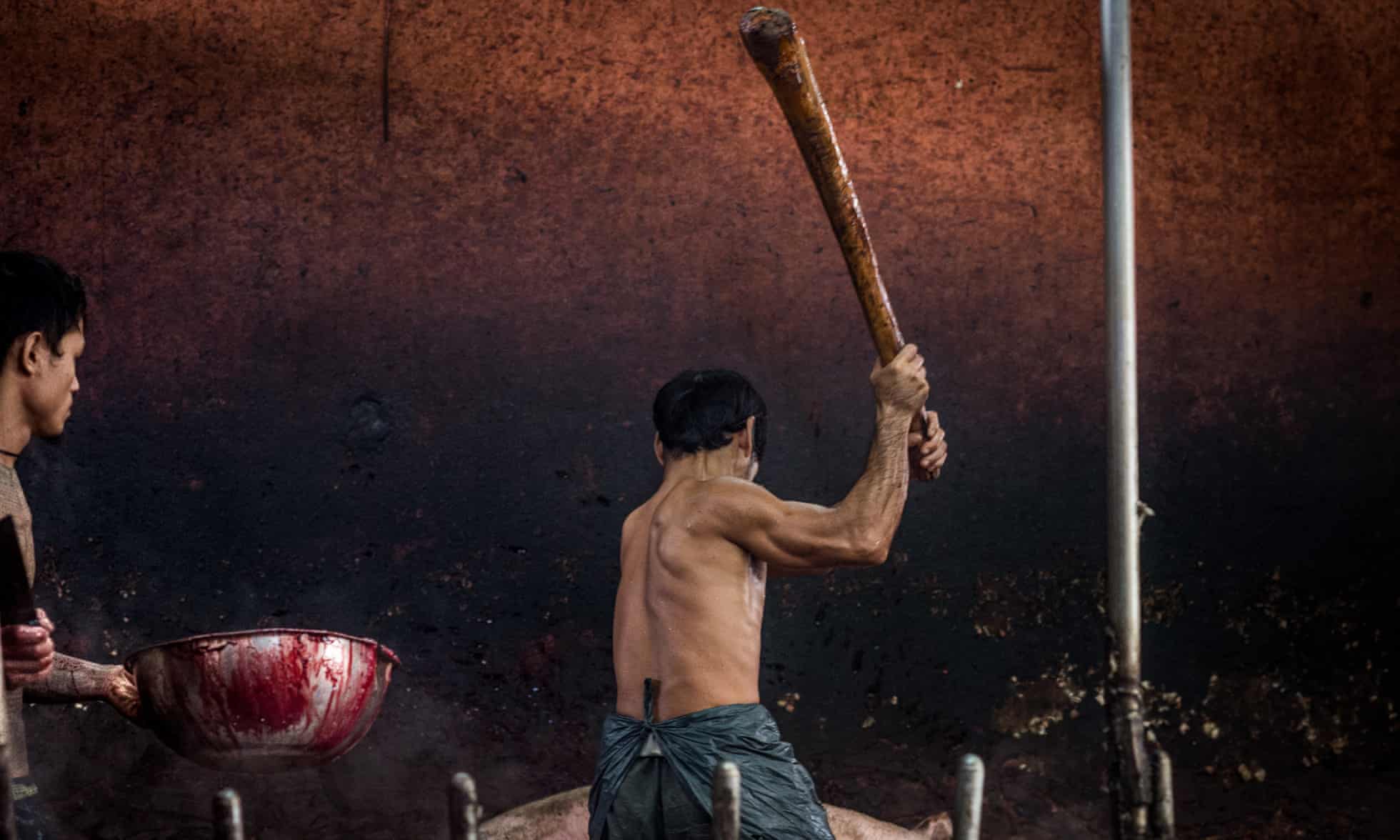
THAILAND’S SHAME IS TYPICAL OF SOUTH EAST ASIAN SLAUGHTERHOUSES
South-East Asian slaughterhouses are clearly among the worst in the world. No humane slaughter standards are enforced, and sentient beings are violently clubbed to death. There is little concept of animals as sentient beings, or animal cruelty, in these countries and the animals pay dearly.
Read The Guardian article here: WARNING: Contains distressing images.
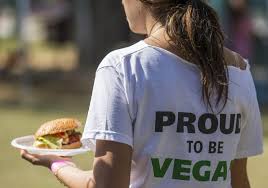
Changing The World In Bite-Sized Chunks
Veganism offers an immediate and logical alternative to the reality of the slaughterhouse, writes PAUL TRITSCHLER. The author recounts childhood memories of roughly handled and severely distressed chickens, and a pig born on a slaughter truck sliding out of the slats to be crushed by traffic on the highway.
Within the industry that caters to the desire to eat animal flesh, blood lies pooled on concrete floors where helpless animals are ‘beaten, broken, scalded, skinned and dismembered’, and unspeakable cruelties against them are devised by bored slaughterhouse workers for their entertainment.
The problem is not our desire to consume animals, it is their desire to live. We have the power to change the brutal, industrialised killing system, as well as positively impacting global problems, if we approach it ‘one bite-sized chunk at a time’.
Read the CounterPunch article here:
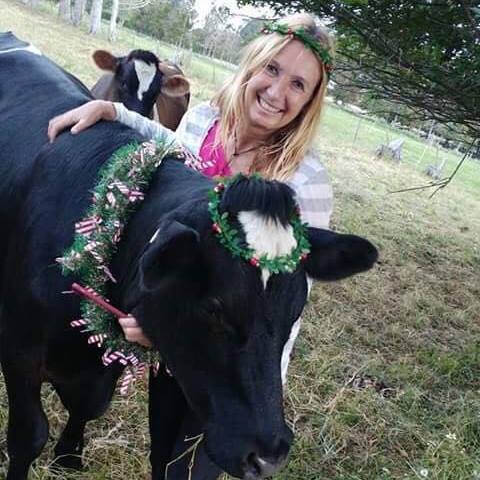
It’s Time For A New Ethic In Our Relationship With Other Animals
Our treatment of farmed animals is a serious moral transgression, writes End Animal Slaughter contributor LYNLEY TULLOCH.
We’ve all had a bad day every now and again. Some are worse than others, involving a threat to our lives or our safety. Imagine if that kind of bad day were also your last?
I remember someone telling me a while back about some steers that she raised on her property for their meat. These steers were friendly and loved eating apples. When the time came for them to be killed, she would call one of them over. As she was giving the steer an apple, the home kill chap planted a bullet in his head. The steer was having a good day that turned into a very bad one.
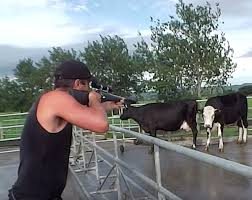
They trust us, and we betray them.
In her book ‘The Ultimate Betrayal. Is There Happy Meat?’ , Hope Bohanec discusses the ethics of such a betrayal. When an animal trusts you with their life, says Bohanec, killing them is the worst act of violence and inhumanity possible. She says, “the more humanely an animal is treated, the greater the bond of trust, and the greater the bond of trust, the more severe the crime of betrayal.” There has been a moral transgression, which includes fraud, betrayal and violence.
There has been a moral transgression, which includes fraud, betrayal and violence.
Furthermore, Bohanec discusses the lies we tell ourselves about ‘humane slaughter’ and the idea that it is acceptable to kill an animal as long as she or he lived a good life. You often hear people talk about how the animal had a great life, and only had one bad day (the day of his/her death). One bad day, when the sun was shining down through dappled leaves, and the apple’s sweetness burst in the steer’s mouth. Maybe out of the corner of his eye the steer saw the man raise his gun, but it was too late. One bad moment of realization, and he was dead.
We need to become very real about what we are doing when we kill animals for their meat. We are taking the life of a living, sentient being. This animal does not want to lose their life, it is all they have. Once they are gone their individuality and sentience goes with them, and any possibility they ever had to enjoy themselves drains out of them with their blood.
Too often we have minimized an animal’s suffering on the basis that she or he is not human. We reduce their rich emotional lives to one-dimensional instincts. But animals, just like us, are driven not just by instincts, but by subjective feelings. Current scientific research convincingly demonstrates that animals can feel the same emotions as humans.
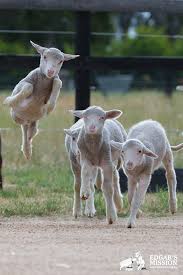
The scientific consensus is that animals feel similar emotions to ourselves.
This much I know to be true. But there are some things I don’t know.
I don’t know what the steer’s big thumping heart felt like when it beat its last beat. I don’t know if the steer choked on his apple on the way down. I don’t know if he was in pain. I don’t know if nearby birds took flight in fear at the sound of the gun, or if the other steers bolted in panic. I don’t know how the steer was feeling when he woke up that very morning and stretched his legs. I don’t know if the sun was shining that day, his last. I don’t know so many things.
And I don’t know how humans can hold life in such contempt.
But I do know a whole lot more than the Eighteenth century Western philosopher Rene Descartes. Descartes did not agree that animals feel pain. Despite loving his dog and caring for him, he stated that animals were mere automatons – reacting to external stimuli as a matter of mere reflex or impulse.
I don’t need to do scientific experiments to know animals have deep feelings. There is a pig pen at the back of my house and every Saturday one of them is killed for meat. There is no denying the absolute terror in the squeals. The last guttural horrified gasp as the pig chokes to death on his own blood is harrowing. That last grasp at life sinks into my stomach like a stone, turns my own blood to frozen water. I can sense his feeling of powerlessness as he realized he was being killed. It travelled though my body too. We are all one.
That last grasp at life sinks into my stomach like a stone, turns my own blood to frozen water.
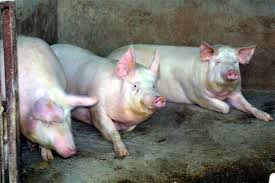
Helpless, terrified pigs awaiting their turn for ‘backyard’ slaughter.
In focusing on the sameness between humans and animals, new questions are beginning to emerge regarding our treatment of them. Currently humans parade around the Earth as if animals are the mere backdrop to our superior existence, instead of our kin. We often treat them as nothing more than stuffed puppets to look at, or bags of meat encased in skin to eat.
This is a plea to re-think our relationship with animals, especially farmed animals. Farmed animals are the most abused and betrayed animals on Earth. We breed them specifically to satisfy our desires for food and clothes. We mutilate their bodies, forcibly impregnate them, incarcerate them in filthy concrete pens, cages and feedlots, and jam them full of antibiotics to keep them alive just long enough for them to get big enough to eat. We also kill their offspring if they are not wanted ( for example male chicks in the egg industry and bobby calves in the dairy industry).
Animals are our kin, not our inferiors. We need to develop a new ethic guiding our relationship with them based on compassion, respect, and care.

